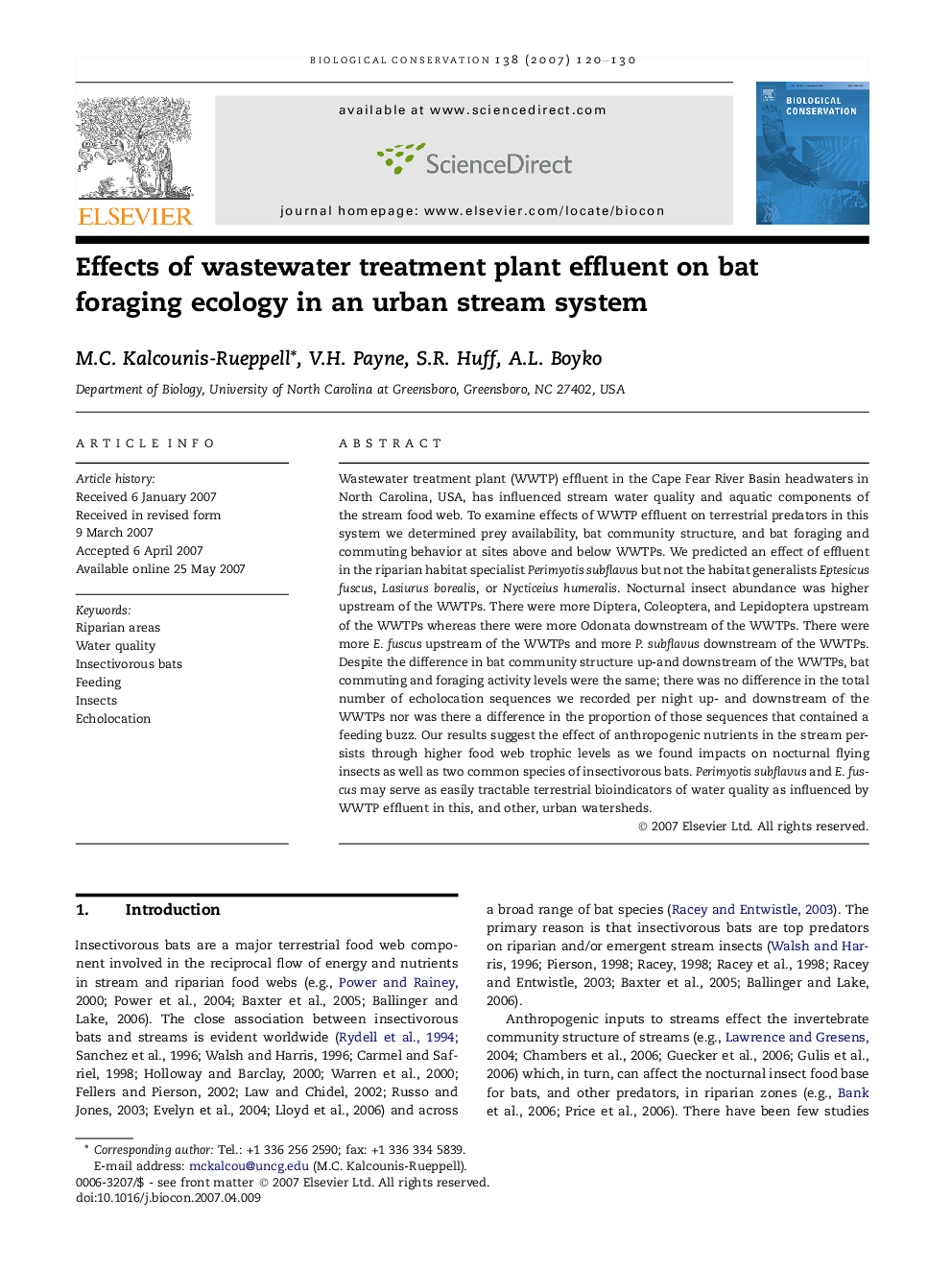| Article ID | Journal | Published Year | Pages | File Type |
|---|---|---|---|---|
| 4387254 | Biological Conservation | 2007 | 11 Pages |
Wastewater treatment plant (WWTP) effluent in the Cape Fear River Basin headwaters in North Carolina, USA, has influenced stream water quality and aquatic components of the stream food web. To examine effects of WWTP effluent on terrestrial predators in this system we determined prey availability, bat community structure, and bat foraging and commuting behavior at sites above and below WWTPs. We predicted an effect of effluent in the riparian habitat specialist Perimyotis subflavus but not the habitat generalists Eptesicus fuscus, Lasiurus borealis, or Nycticeius humeralis. Nocturnal insect abundance was higher upstream of the WWTPs. There were more Diptera, Coleoptera, and Lepidoptera upstream of the WWTPs whereas there were more Odonata downstream of the WWTPs. There were more E. fuscus upstream of the WWTPs and more P. subflavus downstream of the WWTPs. Despite the difference in bat community structure up-and downstream of the WWTPs, bat commuting and foraging activity levels were the same; there was no difference in the total number of echolocation sequences we recorded per night up- and downstream of the WWTPs nor was there a difference in the proportion of those sequences that contained a feeding buzz. Our results suggest the effect of anthropogenic nutrients in the stream persists through higher food web trophic levels as we found impacts on nocturnal flying insects as well as two common species of insectivorous bats. Perimyotis subflavus and E. fuscus may serve as easily tractable terrestrial bioindicators of water quality as influenced by WWTP effluent in this, and other, urban watersheds.
